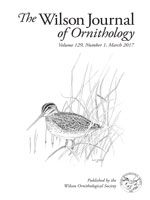Manakins are small frugivorous birds found in the understory of humid Neotropical forests. Although aspects of their complex sexual displays have been addressed in various studies, their nesting biology is poorly documented. The Blue Manakin (Chiroxiphia caudata) is characterized by a cooperative courtship display but knowledge about its reproduction is limited to descriptions of the nest and eggs. We investigated 36 active nests during two breeding seasons in a well-preserved stretch of Atlantic Forest in southeastern Brazil. Nests were shallow cups attached at their rim to horizontal forks in bushes or saplings with slender branches and were usually built over or close to forest streams. Reproductive activities were recorded from October to February and clutches were invariably consisted of two eggs. The incubation period was 18 days; nestling periods varied from 15 to 16 days, and estimated overall nesting success was 34%. Comparisons of nest architecture, egg color, and nestling characteristics revealed important variations among the Pipridae, suggesting that these traits may not be diagnostic of genera and may not be informative in the phylogenetic reconstruction of the group. The duration of the breeding season is shorter than in manakin populations distributed near the equator and provides one of a few pieces of evidence of this tendency in the Neotropics. Our data support the findings that only females provide parental care in the Pipridae, which is hypothesized to be the result of a frugivorous diet.
How to translate text using browser tools
1 March 2017
Breeding behavior of the Atlantic forest endemic Blue Manakin (Chiroxiphia caudata)
Paulo V. Q. Zima,
Daniel F. Perrella,
Carlos H. Biagolini-Jr.,
Lais Ribeiro-Silva,
Mercival R. Francisco
ACCESS THE FULL ARTICLE
nesting biology
nesting success
Parental care
Pipridae
reproductive life history traits





